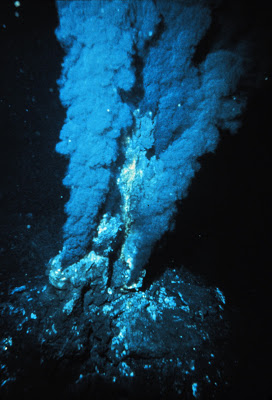
There is plenty of evidence from geology and cosmology that organic chemicals form naturally in space, and on some planets and moons and probably inside the watery heart of comets, as well as having formed on the ancient earth. There is also evidence that the earliest fossils are from single-celled organisms. But we donʼt have fossils that allow us a peek at the internal structures of the earliest replicators, to study and compare their chemical structures and trajectories over the three to four billion years when only single celled organisms existed on earth, i.e. not like the way we can study and compare the fossilized remains of vertebrates (animals with backbones) throughout geologic time. So investigating the question of abiogenesis leaves us with a far wider range of possible variables to consider and experimentally study and compare, and more hypotheses.
Let me add that the cosmos contains at least two trillion galaxies per 2017 data. Furthermore, if the inflation model is true then there are more galaxies out there that we canʼt see/detect, lying further out in the darkness than the ones we can see/detect. Also, the universe features energies and atoms mixing and remixing in far more ‘experiments’ than any origin of life lab. So who knows what mixes might not lead to what?
The cosmos itself is a great mystery since we have nothing to compare it to, and since it seems to naturally lead to more complexity and differentiation as it cools down from the Big Bang. As the cosmos cooled, hydrogen and helium atoms formed, and stars, and then as the stars aged they turned those two basic elements into all the rest, and this occurred naturally, as even creationists admit. So given elements naturally forming from simpler more basic elements, and then with further cooling those elements attaching to one another in simple organic molecular forms, why would anyone be averse to trying to discover how some of those organic molecules might have formed self-replicating chains of molecules?
We even know from experiments that a small chain of RNA can replicate itself given some organic building blocks and a little zinc as a catalyst, no proteins needed, happens naturally.
Let me add that the odds of one PARTICULAR self-replicating molecule forming (like creationists and I.Dʼists calculate, such as a particular arrangement of RNA or DNA or a particular protein like hemoglobin) has much less to do with the odds of some self-replicating molecules forming somewhere via some natural interactions in a cosmos as huge as this one—the latter appears to defy calculation.
Also, the question of whether we are alone in the cosmos, or whether life of a simple sort exists elsewhere, or whether intelligent life exists elsewhere, are all good questions to which we donʼt know the answer. But then, our species has barely just arrived on the cosmic scene, and we remain on the cradle planet, we havenʼt investigated the rest of our own solar system let alone the galaxy and the cosmos.
Also, our telescopes are viewing galaxies and planets from the cosmic past, i.e., we are looking at the light from galaxies that began its journey to our planet millions to billions of years ago. So we canʼt see what is happening NOW on the vast majority of galaxies and planets out there. We canʼt even see planets outside of those circling stars nearest our own star in this one tiny portion of this one galaxy.
Also, astronomers note that the cosmos has not yet reached its maximum of stars and planets! Stars and planets are still forming! And there will be more of them in the future than at present. So we canʼt say what will be going on or not going on then.
Stellar nurseries in some portions of the cosmos are still pumping out stars. Stars will continue being born (and then reborn from the remnants of exploded stars) for tens of billions of years to come. Will the human species still be around tens of billions of years to come? If it survives then will it survive in the same form as it is now? It seems a real possibility that the human species may become extinct with so much energy and matter continually moving around. I can easily imagine a cosmos without humans—with stars burning silently for tens of billions of years as even creationists admit is the lifetime of stars since even creationist astronomers admit the evidence of fusion taking place inside stars is clear, and such a process would take a couple billion years to complete for the majority of stars.
And the lifetime of black holes is a hundred billion years or more since they decay via emitting tiny amounts of Hawking radiation.
Also, a “huge” amount of “non-biotic organic materials” covering the whole earth is not necessary according to some hypotheses, only the gradual accumulation of some biotic materials in some regions of the earth. One such hypothesis is based on the fact that tiny holes form in rocks deep undersea near thermal vents. Beyond the tiny holes are hollowed out regions within the rock where organic materials can accumulate in two-dimensional fashion clinging to the inside of the hollowed out rock.
Matthew Pocock adds, “Personally Iʼm liking the thermal vent idea. Some of the core chemistry of the cell is suspiciously similar to that within the matrix of the rock in these vents.”
And see this fascinating video


No comments:
Post a Comment